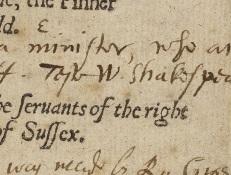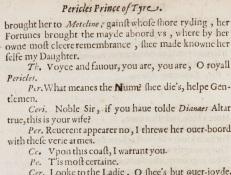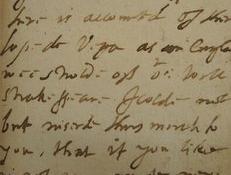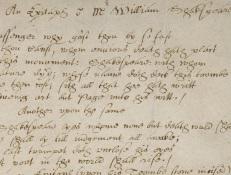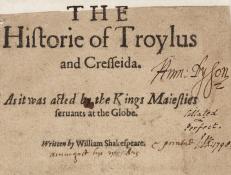To view a sortable list, please visit the Resource
All Documents
ca. 1598
The scholar and writer Gabriel Harvey was known and mocked in his lifetime for making copious notes in the margins of printed books. An inventor of words, friend of Edmund Spenser, and rival of Thomas Nashe, he constantly sought to improve himself through note-taking and repetitive reading.
1599
Sometime after Sir George Buc, the future Master of the Revels, purchased the anonymous play George a Greene, Pinner of Wakefield shown here, he added two manuscript notes to the title page.
1599
SHAKESPEARE DOCUMENTED IS STILL GROWING! Descriptive content and transcriptions will continue to be added, updated and expanded. Check back for regular updates!
ca. 1609
Scipio Squire (alias Le Squyer alias Squyre) (1579-1659), who owned the edition of Pericles shown here, was a minor legal officer who rose to become deputy chamberlain and then chamberlain of the Exchequer, or royal treasury.
ca. 1613
In 1613 Leonard Digges penned a note onto the fly-leaf of a copy of the third edition of Rimas de Lope de Vega Carpio, printed in Madrid the same year; the inscribed copy survives in the library of Balliol College, Oxford.
1623
Three epitaphs to Shakespeare are copied onto the last leaf of this First Folio. The first is from Shakespeare’s monument in Holy Trinity Church.
ca. 1623- 1633
Humphrey Dyson (1582-1633) was probably the first owner of this copy of the first edition of Troilus and Cressida (1609), now in the Huntington Library. Dyson signed his name on the title page, as he did with many other volumes in his extensive library.
ca. 1620- 1650
A copy of the third edition of William Camden’s Britannia (1590) now in the Huntington Library in San Marino, California, carries an inscription in ink on the lower margin of page 452:
et Gulielmo Shakespear Roscio plané nostro


